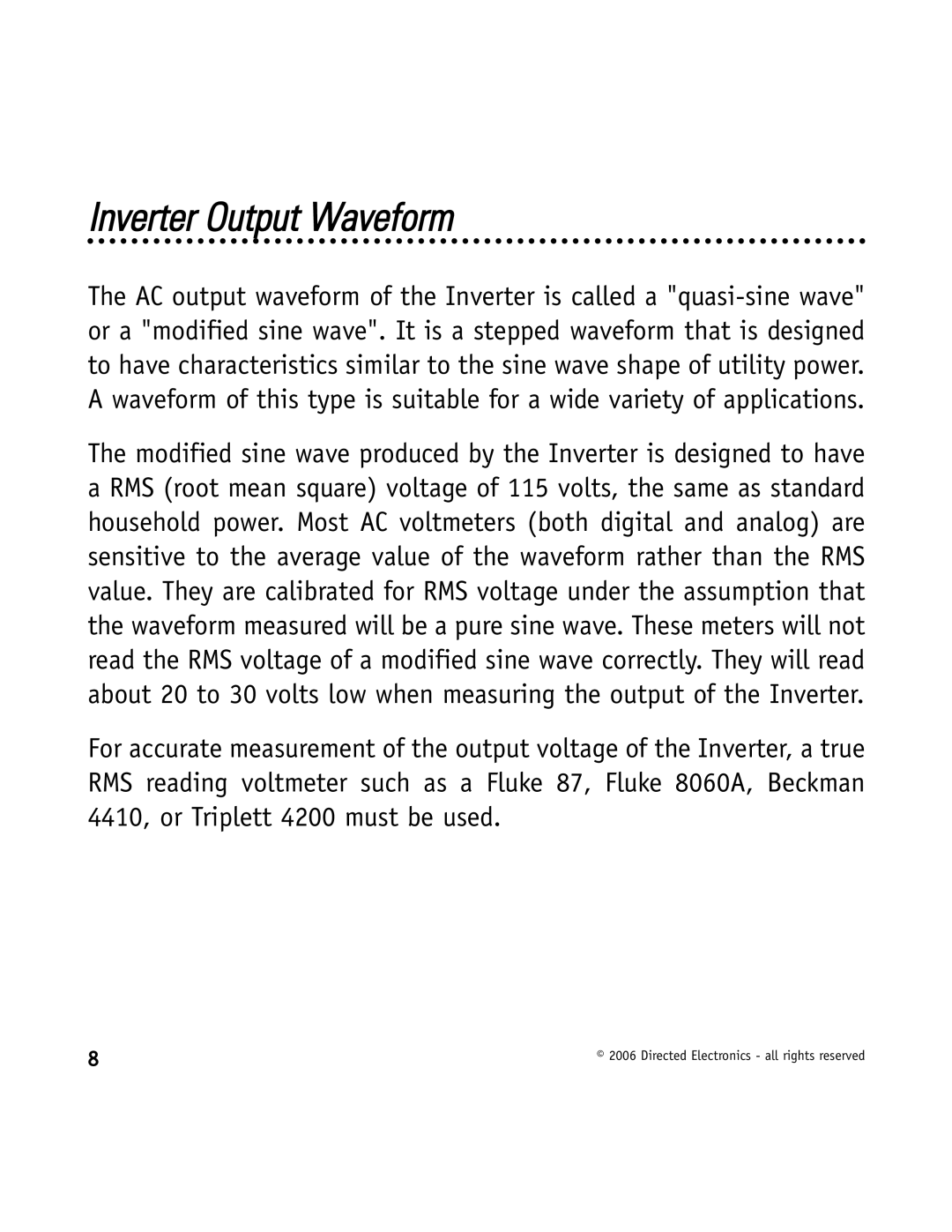Inverter Output Waveform
The AC output waveform of the Inverter is called a
The modified sine wave produced by the Inverter is designed to have a RMS (root mean square) voltage of 115 volts, the same as standard household power. Most AC voltmeters (both digital and analog) are sensitive to the average value of the waveform rather than the RMS value. They are calibrated for RMS voltage under the assumption that the waveform measured will be a pure sine wave. These meters will not read the RMS voltage of a modified sine wave correctly. They will read about 20 to 30 volts low when measuring the output of the Inverter.
For accurate measurement of the output voltage of the Inverter, a true RMS reading voltmeter such as a Fluke 87, Fluke 8060A, Beckman 4410, or Triplett 4200 must be used.
8 | © 2006 Directed Electronics - all rights reserved |
